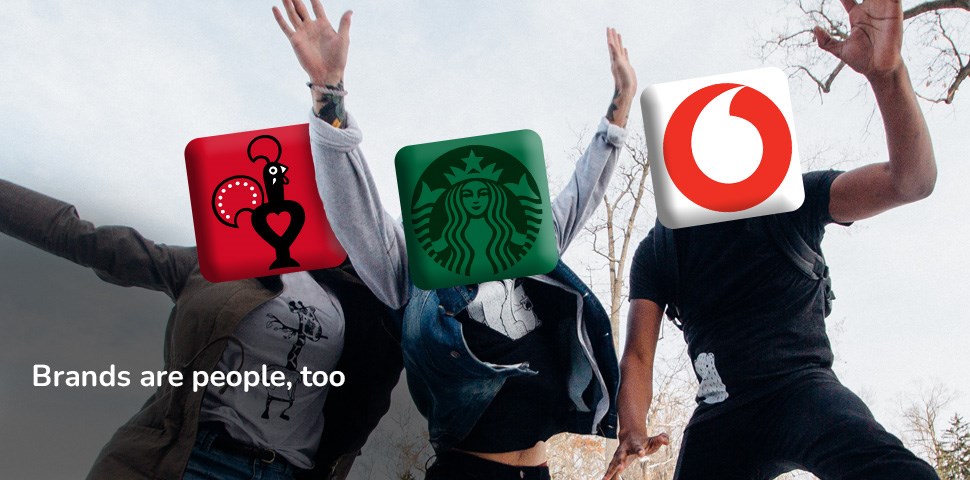Generation Z – or Gen Zers, Zoomers, and digital natives – were born between the late 1990s and 2012. Unlike millennials (who had an analogue childhood, a digital early adulthood, and a liking for avo on toast), Gen Z was the first generation to grow up with devices in their tiny hands and social media in their heads. They don’t know a life with landlines, TV test patterns, the pain of having to rewind a VHS before returning it, and actual mix tapes (just watch this video of Gen Zer Caroline trying to play a cassette relic from the past to see what we mean).
‘Go to where your audience is’ applies more so than ever. However, what works on millennials (nostalgia) and Gen X (status) does not work on Gen Z. Despite not remembering life before smartphones and streaming, using phrases like ‘iykyk’ and wearing septum rings, it’s estimated that Gen Z has $360 billion in disposable income. That’s good news for CMOs, except most marketers don’t have a clue how to target this cohort.
(Pro tip: if you don’t understand Ryanair’s TikTok content, you are a dinosaur, and you need a Gen Zer on your marketing team, with immediate effect).

What makes Gen Z tick?
Gen Z is about purpose-driven marketing, and they support brands aligned with what they feel is important. For example, Levi’s targeted Gen Z’s climate-change and fast-fashion concerns with its hugely successful ‘Buy better. Wear longer’ campaign that brought in a YouTube star (Emma Chamberlain, voted one of the 25 most influential people on the internet) and Jaden Smith (considered a gender-fluid fashion icon).
With Gen Z, authenticity can’t be emphasised enough. Like their fashion sense and ways of seeing the world, they want marketing outside the box, not confined by rules, and definitely not a hard sell. They are loyal to brands that show genuine concern for the environment, human rights, and racial and gender equality.
When we say genuine concern, we mean it. Gen Z can sniff out a disingenuous Pride Month campaign like Simons Town residents spotting f**ol loaded onto a cargo ship in the middle of the night (even in the pitch, load-shedding dark).
The fruit-fly generation
Having grown up on social media and constant connectivity, Gen Z has an understandably short attention span. It’s said that the average attention span of a goldfish is nine seconds, but back in 2015, a Microsoft study found that people lose concentration after eight seconds. That was eight years ago, so it’s safe to say that Gen Z’s attention span is worse than a goldfish. It could be more like a fruit fly’s (an ADHD study revealed that fruit flies have one of the shortest attention spans in the animal kingdom, but Ritalin apparently helps).
No offence to Gen Zers reading this, but we’re calling you the fruit-fly generation. There’s some non-sensical yet viral TikTok content in that, trust us.
Facebook and email don’t cut it for this generation – 84 percent of millennials use Facebook but only 32 percent of Gen Zers like their gran’s posts, while 75 percent of millennials check their email multiple times a day, but just over half of Gen Z check their mails more than once a day.

If you’re marketing to Gen Z, you must establish a strong presence on visual-heavy platforms like Instagram, YouTube, and TikTok.
According to McKinsey, TikTok sets trends and determines culture for Gen Zers, who comprise 60 percent of the app’s more than one billion users.
Bite-sized content like entertaining short videos and interactive experiences captures their attention. Add some personality and authenticity to your responses, questions, and comments because Gen Z loves a good comment feed, and they want recognition. And no polished or curated content for them, either: they want a lo-fi, DIY vibe (with AI-generated voiceovers to boot).
Keep in mind that Gen Z also uses platforms differently from other generations. Millennials took to social media with highly personal and public posting on Facebook, Twitter, and blogs, but Gen Zers are more privacy-savvy and prefer anonymous platforms (think private Instagram accounts for a limited audience, private Discord servers for gamers, and Snapchat with its disappearing messages).

Brands are people, too
We won’t lie, Gen Z is a difficult generation to market to, and many marketing decision-makers (that’s you, millennials and Gen Xers) are scratching their heads. Remember we said that Gen Z has billions of disposable income? That’s because they’re thrifty as hell, they deeply understand that the world is an unpredictable place, and they know there’s no such thing as stable employment. Instead, they focus on saving and investments, and many work ‘6-9’ to fit in a side hustle.
Gen Z is well-informed, but they’ll give credibility to people, not brands. That’s why influencers, who put out genuine and organic content centred on specific interests, are essential for a Gen Z digital marketing campaign. Gen Z is very disillusioned with the corporate façade and the state of the world; you can’t pull the proverbial wool over their eyes. They care about people more than brands, which is why they resonate so much with influencers and feel connected to them. Once you gain their trust, they’ll be loyal to the influencer’s brand.
Gen Z is harder to convert than millennials. Focus on influencer authenticity, purpose-driven approaches, and raw, attention-grabbing, bite-sized content that breaks the rules. It doesn’t necessarily have to make sense; the content just needs to be real, entertaining, and fun. It's time to shift your marketing strategies from millennials to Gen Z's preferences because this generation needs a whole, new approach that’s expressive, inclusive, and progressive.
Stumped by marketing to Gen Z? Contact us; we can help with that.




